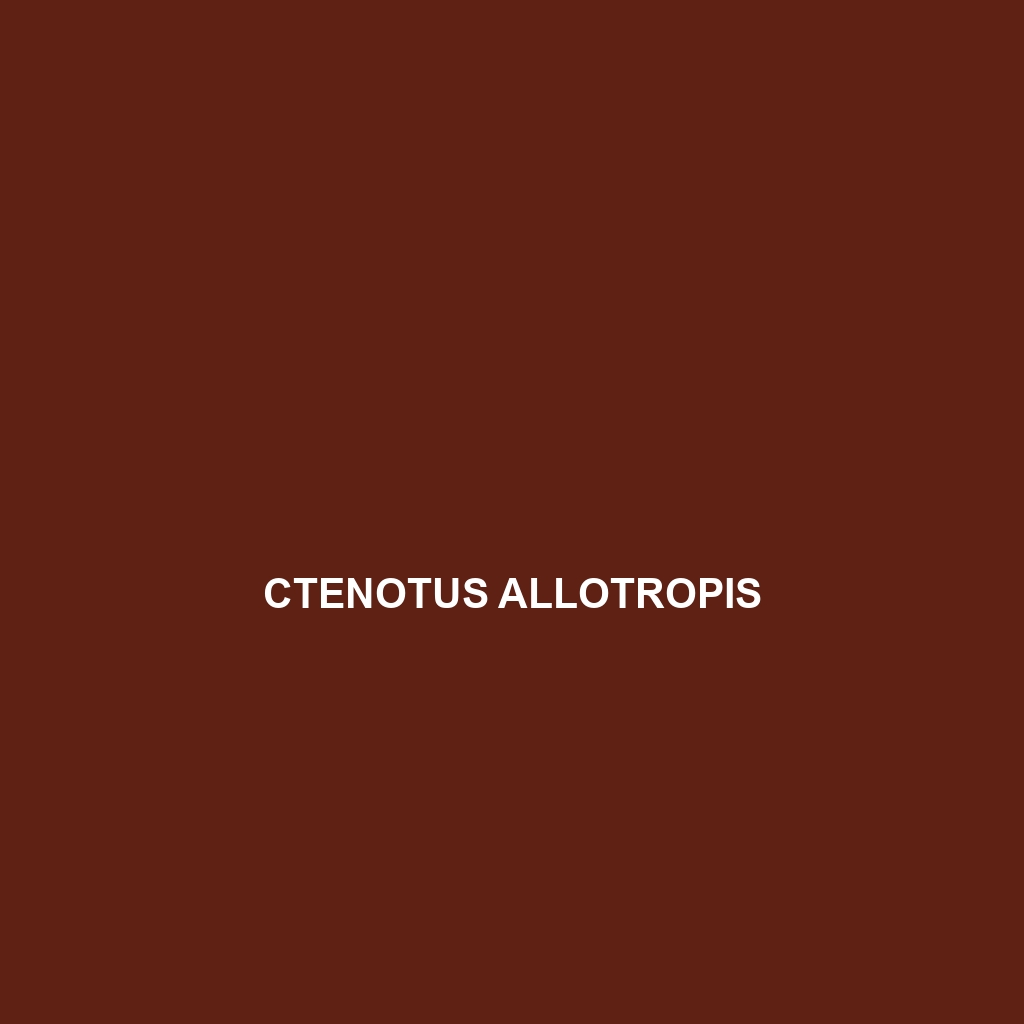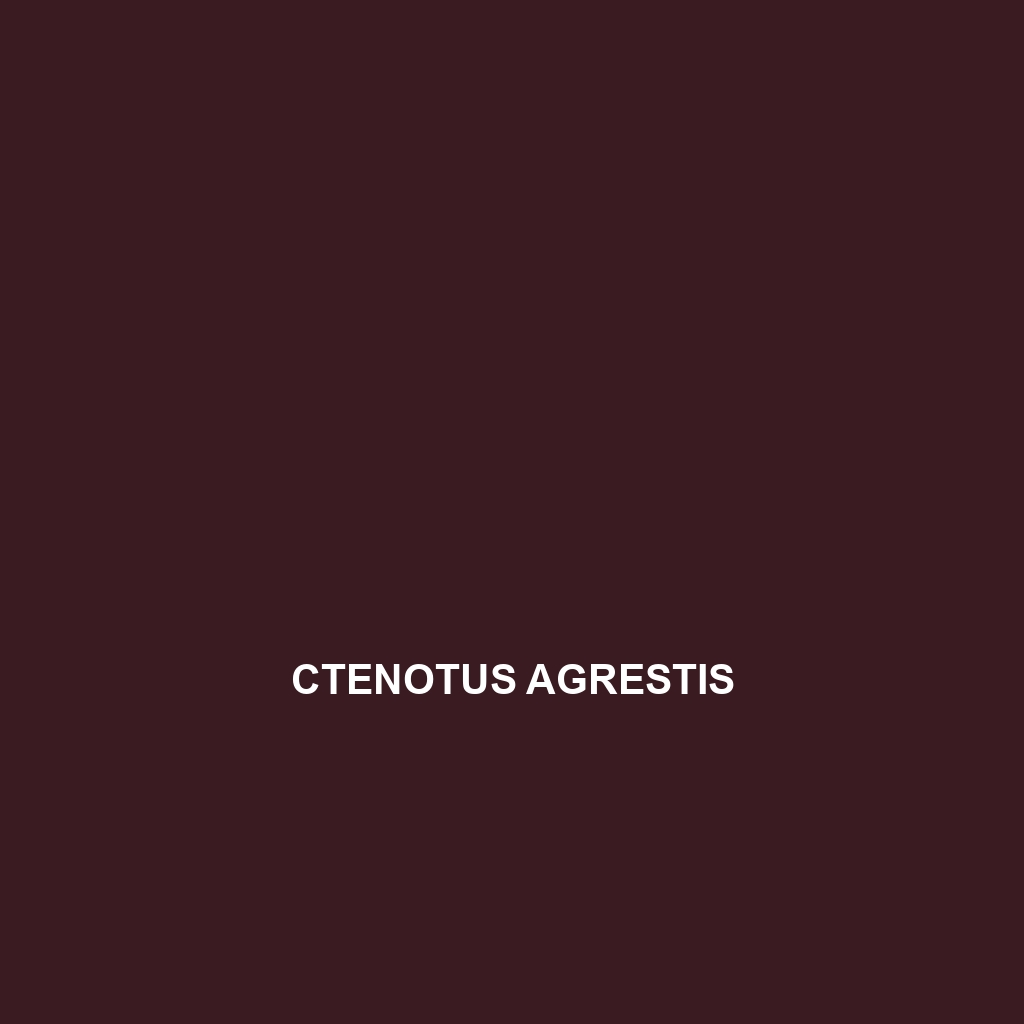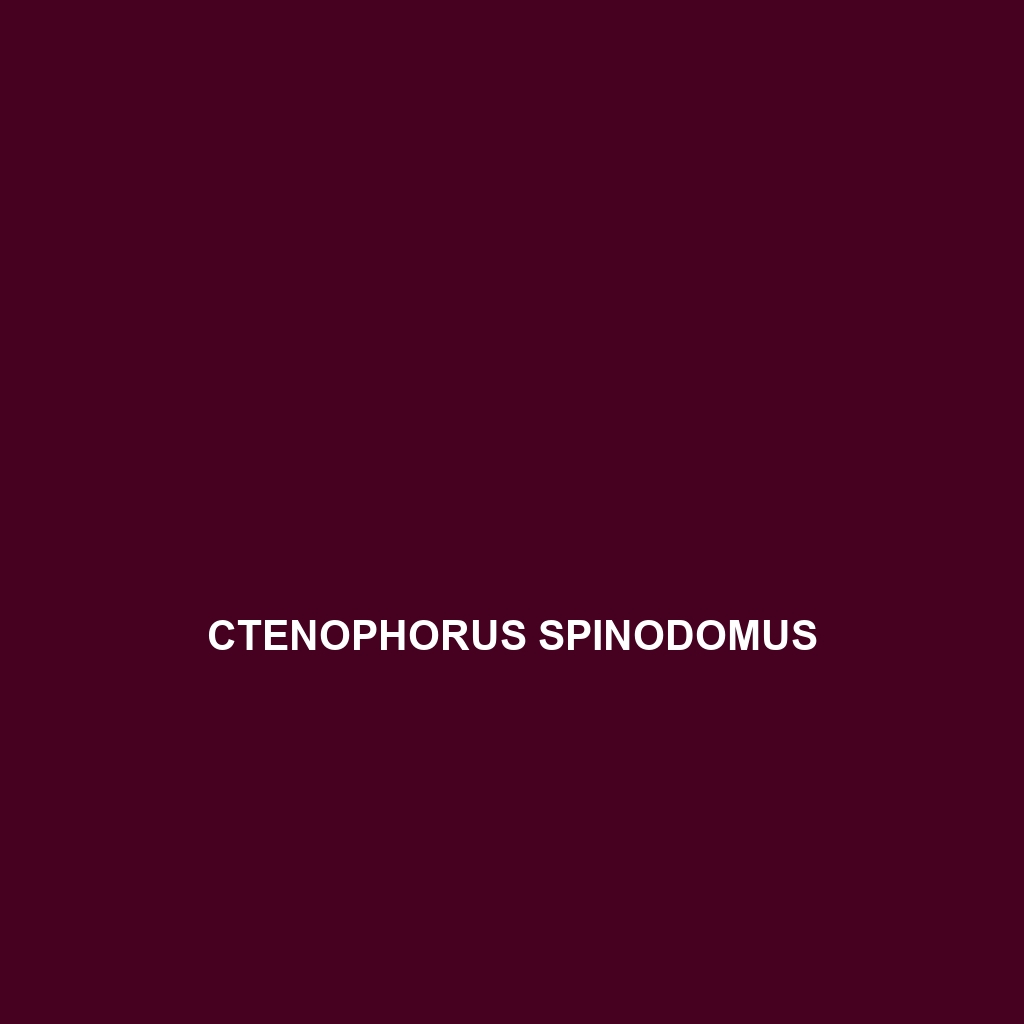Ctenotus essingtonii, commonly known as the Essington Skink, is a medium-sized lizard found in northern Australia's arid regions, characterized by its slender body, vibrant yellow or orange stripes, and diurnal behavior. This resilient species primarily feeds on insects and plays a critical role in its ecosystem as both predator and prey.
Tag: insectivorous lizards
Ctenotus delli
Discover the captivating Ctenotus delli, a slender, diurnal lizard native to Australia’s arid regions, known for its sandy brown to olive coloration and effective camouflage. This insectivorous species plays a vital role in its ecosystem by regulating insect populations and serves as prey for larger predators, reflecting a healthy habitat.
Ctenotus burbidgei
Ctenotus burbidgei, or Burbidge's Ctenotus, is a slender lizard native to the arid regions of Western Australia, measuring 10 to 15 cm with light brown coloration and darker stripes for camouflage. This diurnal species plays a crucial ecological role as a predator of insects and is known for its ability to regenerate its tail.
Ctenotus brachyonyx
Ctenotus brachyonyx, commonly known as the short-tailed skink, is a medium-sized Australian lizard that thrives in semi-arid scrublands and grasslands, exhibiting distinctive brown or gray coloration and a short, rounded tail. This active, diurnal species primarily feeds on small invertebrates and plays a crucial role in its ecosystem by controlling pest populations.
Ctenotus australis
Ctenotus australis, or the Australian Ctenotus, is a diurnal lizard measuring 15 to 25 cm, characterized by its elongated body and distinctive striped pattern. Thriving in arid regions, it feeds on insects and plays a vital role in its ecosystem by regulating insect populations and improving soil health through its burrowing habits.
Ctenotus alleni
Ctenotus alleni, or Allen's Ctenotus, is a slender, insectivorous lizard found in arid regions of Australia, characterized by its light brown to grayish coloration with darker stripes and a diurnal lifestyle. This agile species plays a crucial role in its ecosystem by controlling insect populations and serving as prey for larger predators.
Ctenotus agrestis
Discover the Ctenotus agrestis, or grass skink, a fascinating diurnal lizard from southeastern Australia that thrives in grassy plains and open woodlands. With its agile movements, distinctive coloration, and vital role in controlling insect populations, this ovoviviparous species showcases remarkable adaptations, including tail regeneration.
Ctenophorus vadnappa
Product Ctenophorus vadnappa is a medium-sized, diurnal lizard native to southeastern Australia, characterized by its brown and gray coloration with lighter stripes. It thrives in rocky outcrops and arid scrublands, primarily feeding on insects and playing a vital role in its ecosystem.</p>
Ctenophorus tjakalpa
The Ctenophorus tjakalpa, or tjakalpa dragon, is a striking lizard native to the arid regions of Australia, known for its vibrant blue and orange coloration in males and its agile behavior. This diurnal species thrives in rocky outcrops and scrublands, feeding primarily on insects while playing a vital role in maintaining the ecological balance of its habitat.</p>
Ctenophorus slateri
Discover the Ctenophorus slateri, commonly known as Slater's Dragon, a medium-sized lizard native to southeastern Australia. Known for its distinctive dorsal crest and insectivorous diet, this agile climber thrives in arid habitats, playing a crucial role in maintaining ecological balance.









